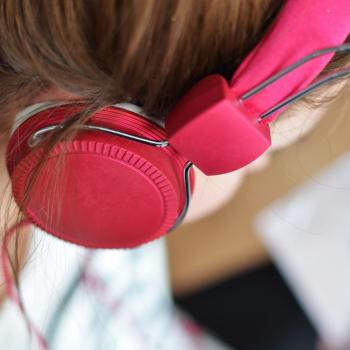Death.
It was too hard to process the truth of the loss of a loved ones fully developed baby.
Upon the revelation of this horrible news there were no tears. Eyes were dry. No emotion was present on her face. She just replied, “Ok.”
As an emotional person, I was doing everything I could to hold it together. Tears continually flowed as I shouldered some of the burden of this loss. But my girl seemed unaffected. And that scared me because she was excited for the upcoming birth.
However, the day of funeral, the siblings of the child wept. Seeing this response modeled helped my daughter weep as well. It was good to see that she was capable of tears and entering in someone elses grief.
Before this I feared the lack of empathy I often observed. But after this incident, I realized that I was seeing it all wrong.

I think with the news of kids shooting kids and all the horrible violence we see in the news, it gives kids with autism and aspergers a bad wrap. It is too often assumed that they are unable to show or express empathy.
Children with autism process pain and loss differently. Especially in the earlier, formative years.They feel the same pain but don’t always know how to express it. That can be modeled and taught.
Autistic thinking is typically rigid, black and white. The question she had was, “What happened to the baby?” but that was it. This question was appropriate for the category of thinking for which she was comfortable.
As she observed tears, she realized this was an appropriate response. She was able to experience the cleansing relief of tears.
This behavior of learning to enter into anothers pain lasted all of her formative years. Entering her teen years she now has gotten really good at imagining how things that happen may make someone else feel. This took a lot of teaching but is a part of her functioning now. The problem was it had to be taught so we must make an intentional effort to teach it to them.
Kids with different brain wiring will process things in different ways. The difference doesn’t make them bad. It is just different. God made each one of us different for specific functions. Would you really want an overly emotional police officer or engineer? Our differences make us a beautiful diversity. However, empathy is still important and with these kids it needs to be taught.
Teaching empathy is done by explaining situations with activities like role playing or working through social stories. It is also asking them how they felt when someone made fun of them. After they tell you, use it as an example to say that a friend probably felt that way too. These activities have been eye opening for my daughter. And it is a continual process. As she grows and learns she is doing better at considering others feelings and keeping two-way friendships. But it has taken lots of practice.
How about you? Have you seen this same pattern with your autistic child? What suggestions do you have to help them learn empathy?
Angela Parsley is a certified biblical counselor who lives in Chattanooga, Tennessee, with her husband, Tony, and their three children. They are members of Concord Baptist Church. Angela writes and reviews books at her blog, Refresh My Soul. You can follow her on Twitter.













